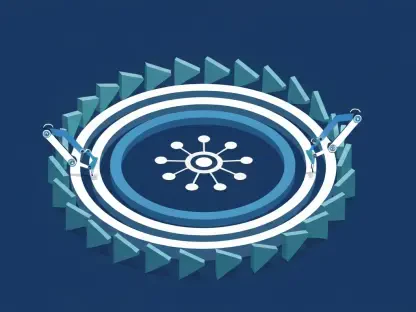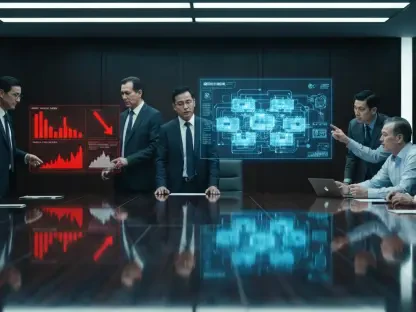In the ever-evolving landscape of artificial intelligence (AI), the introduction of sophisticated frameworks and systems continues to redefine potential applications and solutions. A prominent advancement in this domain is the Multi-Agent System Search (MASS) framework, a culmination of joint research by leading experts at Google and the University of Cambridge. This framework represents a paradigm shift in the design and optimization of multi-agent systems (MAS) to harness multiple large language models (LLMs) for tackling intricate challenges. In contrast to traditional systems rooted in single-model solutions, the MASS architecture leverages various roles across independent agents, each executing distinct functions. This reimagined distribution allows for enhanced analytical capabilities, improved response accuracy, and more efficient actions, marking a significant milestone in artificial intelligence research and applications.
Advancements in Multi-Agent Systems
The MASS framework is driven by the substantial necessity to improve the structural and functional attributes of MAS, emphasizing inter-agent connectivity and optimized input prompts. These systems have become increasingly integral for AI specialists aiming to navigate highly complex problem domains that require multifaceted solutions. At the core of MASS’s mission is the transformation of conventional MAS processes by refining their architecture and improving operational dynamics to achieve unparalleled outcomes. A significant hurdle within MAS design is the systems’ over-reliance on precise instructions, or prompts, which sensitively dictate each agent’s operational parameters. Subtle variations in these prompts can result in dramatic shifts in performance, complicating scalability and amplifying the risk of cascading errors, especially in sequences where the output of one agent is utilized as input for others. Moreover, the determination of the system’s topological structure—encompassing agent count, interaction modalities, and task sequencing—often depends on manual setup, elevating trial-and-error efforts. As the solution space remains extensive and non-linear, encompassing vast options for both prompt engineering and topology construction, conventional methods often falter in optimizing both domains concurrently.
MASS responds to these intricacies by automating the design of MAS through a harmonious optimization of prompts and networks. Unlike its predecessors, which treated structural and functional components as independent entities, MASS adeptly narrows focus on the elements with the most substantial performance impacts, delivering efficient results through a systematic methodology. Comprising three methodical phases, the framework embarks on localized prompt optimization, selecting effective workflows based on refined prompts, followed by a comprehensive global prompt optimization for system-wide performance gains. Eliminating manual configurations dramatically reduces computational burdens while simultaneously enhancing result quality, underscoring the framework’s efficacy.
The Methodology Behind MASS
The innovative design of MASS is grounded in the optimization of all facets of MAS construction, setting it apart from other approaches that focus exclusively on either workflows or prompts. Several initiatives have attempted to refine these components individually; however, they often fall short of realizing the complete potential achievable through integrated refinement. Tools such as DSPy create data-driven prompts, whereas others heighten agent populations to aid problem-solving via mechanisms like voting. Solutions like ADAS establish code-centric topologies through meta-agent designs, whereas methodologies employed by frameworks like AFlow use advanced search algorithms for efficient exploration. Although these separate methods provide incremental improvements, they frequently lack the holistic, automatic design capabilities of MASS, which interlinks these facets seamlessly to streamline MAS development.
On a technical level, the MASS framework begins its process by enhancing prompt structures, chiseling each MAS building block for optimal function. Encompassing distinct tasks—such as aggregation, evaluative reflection, or problem-solving debates—each agent’s commands undergo meticulous optimization using strategies that incorporate guided examples and instructional refinements. Once individual agent prompts reach optimal configurations, the system investigates viable agent configurations to craft efficient topologies, guided by findings and confined to critical subspaces that promise maximal influence. This is followed by fine-tuning the collective system, optimizing the chosen trajectories to significantly improve workflow efficiency.
Impacts and Achievements of MASS
Application of the MASS framework in empirical settings has delivered impressive results, consistently outperforming previous industry benchmarks in areas demanding complex reasoning, incremental comprehension, and advanced coding capabilities. Specifically, performance evaluations utilizing datasets such as MATH and HotpotQA revealed notable gains in accuracy, underscoring MASS’s supremacy. For instance, when engaging the Gemini 1.5 Pro model against the MATH dataset, agents fine-tuned via prompt optimization reached an average accuracy nearing 84%. This marked improvement outpaced earlier methodologies, including those predicated on self-consistency or multi-agent debate configurations. Particularly within the MASS debate topology, an additional performance enhancement of 3% was observed in the HotpotQA assessments, reflecting the efficacy of judicious topology choices. Conversely, suboptimal topologies such as reflection or summarization occasionally hindered system performance, spotlighting the indispensable role of careful design selection.
Key insights arise from this rigorous exploration. The inherent complexity of MAS design merits significant attention to prompt sensitivity and architectural novelty, mandating precise optimization protocols to maintain system integrity and performance. Empirical evidence validates that optimized prompting and topological configurations can yield superior outcomes, outperforming simplistic scaling of agent numbers, as evidenced by the 84% precision achieved through refined mechanism deployment. Additionally, not all orchestration strategies prove advantageous; ill-suited topologies may degrade performance. MASS delivers a robust, cost-effective framework by encapsulating the optimization process into three phased segments, markedly reducing design complexities and computational expenses, while allowing for modular and adaptable solutions pertinent to varied application domains and tasks.
Future Directions and Implications
The MASS framework addresses the critical need to enhance Multi-Agent Systems (MAS) by optimizing their structure and functionality, focusing primarily on inter-agent connectivity and refined input prompts. These systems are vital for AI professionals dealing with intricate problem domains requiring complex solutions. MASS aims to revolutionize traditional MAS processes by refining architecture and improving dynamics to achieve exceptional outcomes. A significant challenge in MAS design is their heavy dependence on precise prompts, which define each agent’s operation. Minor changes in these prompts can greatly affect performance, complicating scalability, and increasing error risks, especially when outputs become inputs for other agents. The system’s topology, involving agent count and interaction settings, often relies on manual configuration, emphasizing trial-and-error and broad solution spaces. MASS tackles these complexities by automating MAS design, synchronizing prompt optimization and network configuration, reducing manual setups, improving computational efficiency, and enhancing result quality, proving its significant efficacy.









